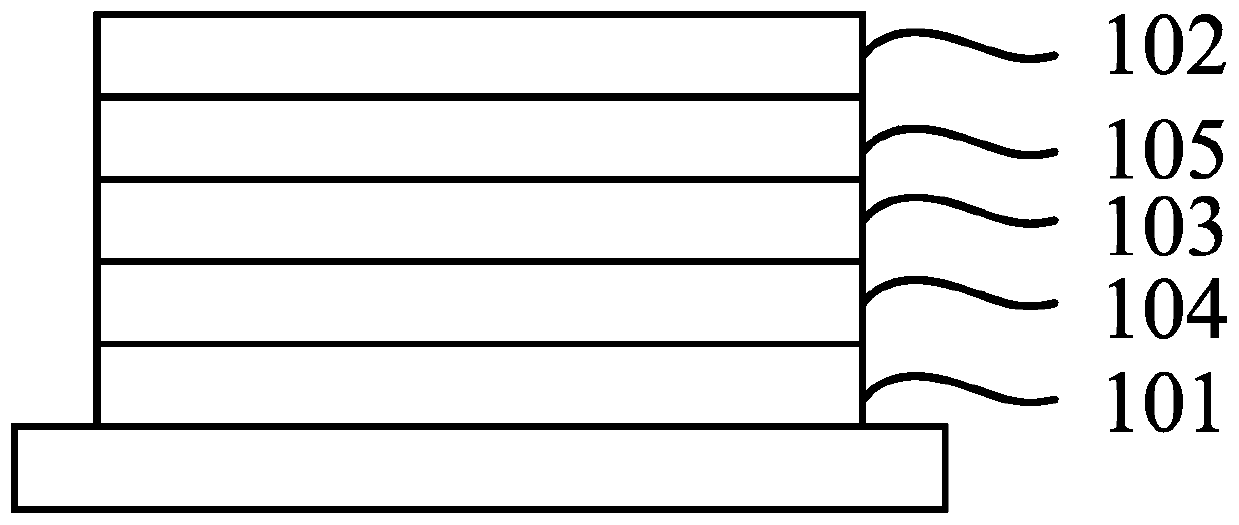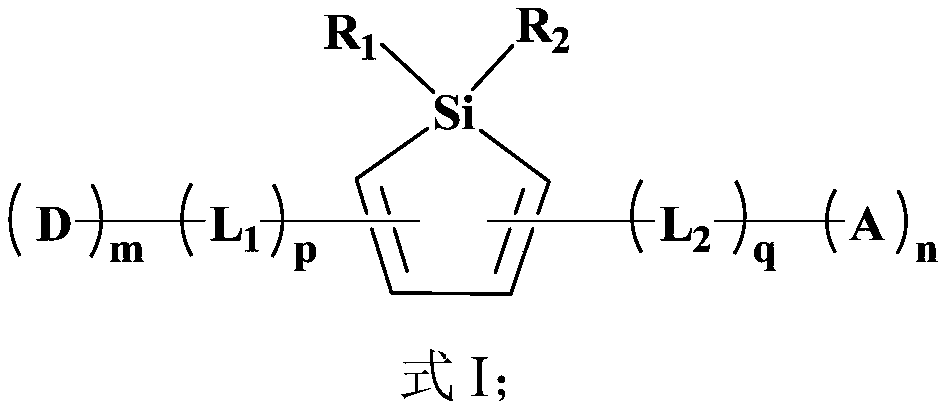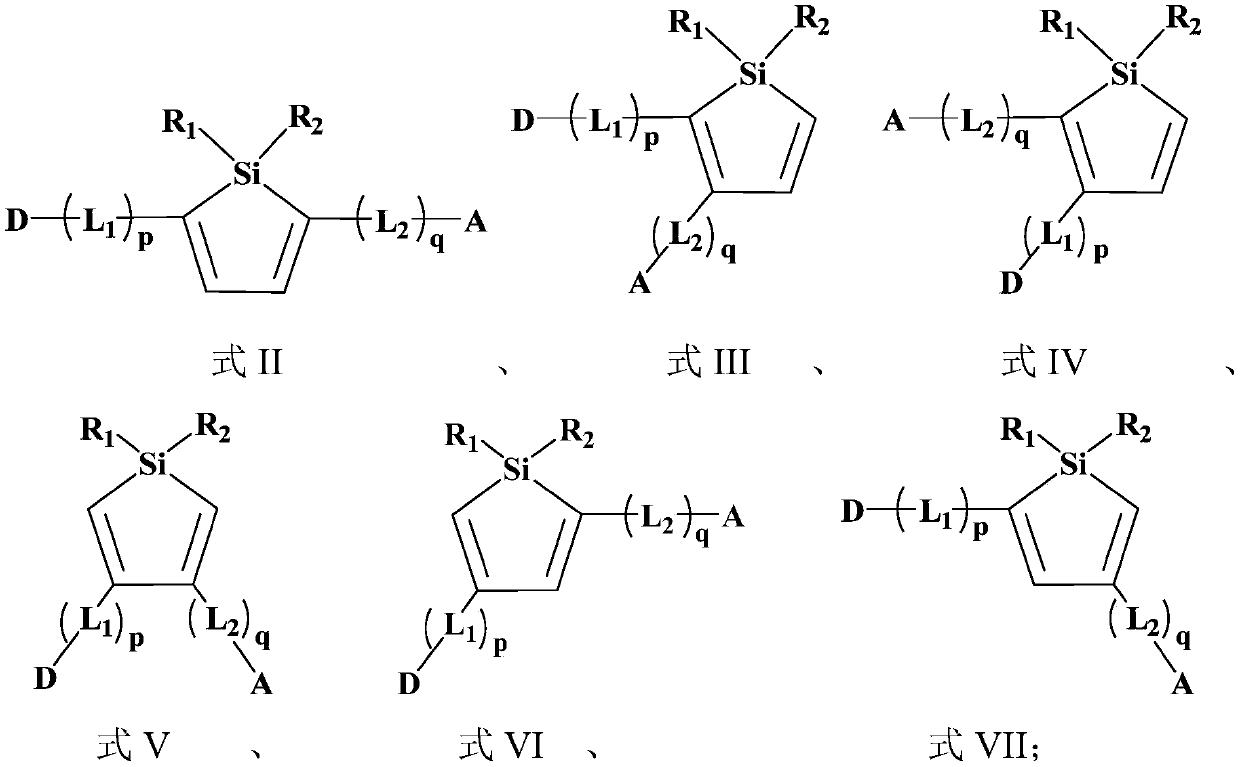Organic electroluminescent compound and application thereof
An electroluminescence and compound technology, applied in the field of organic electroluminescence compounds, can solve the problems of poor performance of phosphorescent host materials, unable to meet the requirements of OLED devices, etc., and achieve improved luminous brightness and luminous efficiency, good electron mobility, and macromolecules. The effect of density
- Summary
- Abstract
- Description
- Claims
- Application Information
AI Technical Summary
Problems solved by technology
Method used
Image
Examples
Embodiment 1
[0119] This embodiment provides an organic electroluminescent compound with the following structure:
[0120]
[0121] The synthetic route is as follows:
[0122]
[0123] The specific preparation method is as follows:
[0124] (1) Compound M1-1 (10mmol), 1H-carbazole (10.5mmol), (dibenzylideneacetone) dipalladium (0.05mmol), sodium tert-butoxide (14mmol) and 4,5-diphenyl Phosphine-9,9-dimethylxanthene (0.2mmol) was put into a 50mL three-necked flask, and the degassing and nitrogen replacement were repeated three times rapidly under stirring, and 20mL of toluene was added through a syringe; ℃ and heated to reflux for 3 hours; after the reaction, add water to the reaction solution cooled to room temperature, use dichloromethane to extract, and use saturated brine to wash; use anhydrous sodium sulfate to dry the organic layer, and The solvent was distilled off and purified by column chromatography to obtain intermediate M1-2.
[0125] (2) Weigh the intermediate M1-2 (10...
Embodiment 2
[0129] This embodiment provides an organic electroluminescent compound with the following structure:
[0130]
[0131] The synthetic route is as follows:
[0132]
[0133] The specific preparation method is as follows:
[0134] (1) Add compound M14-1 (3mmol), cuprous oxide (8mmol), dimethylacetamide (DMAC, 4mL) and 9,9-dimethyl-9,10-dihydro in a 50mL round bottom flask Acridine (3.5 mmol) was refluxed at 170° C. for 48 hours under an argon atmosphere. The obtained intermediate was cooled to room temperature, added to water, and then filtered through a pad of diatomaceous earth. The filtrate was extracted with dichloromethane, then washed with water, and used After drying over anhydrous magnesium sulfate, filtration and evaporation, the crude product was purified by silica gel column chromatography to obtain intermediate M14-2.
[0135] (2) In a 250mL round bottom flask, intermediate M14-2 (15mmol), potassium acetate (40mmol) and dry 1,4-dioxane (60mL), bis(triphenylpho...
Embodiment 3
[0140] This embodiment provides an organic electroluminescent compound with the following structure:
[0141]
[0142] The synthetic route is as follows:
[0143]
[0144] The specific preparation method is as follows:
[0145] (1) Compound M30-1 (15mmol) and potassium acetate (40mmol) were mixed with dry 1,4-dioxane (60mL), Pd(PPh 3 ) 2 Cl 2 (0.4mmol) and pinacol diboronate (25mmol) were mixed, and stirred at 90° C. under a nitrogen atmosphere for 48 hours. The resulting intermediate was cooled to room temperature, added to water, and filtered through a pad of celite. The filtrate was extracted with dichloromethane, washed with water, and dried over anhydrous magnesium sulfate. After filtration and evaporation, the crude product was purified by silica gel column chromatography. The product gave intermediate M30-2.
[0146] (2) Intermediate M30-2 (10mmol), 3-bromo-9-phenyl-9H-carbazole (12mmol) and Pd(PPh 3 ) 4 (0.3mmol) was added to a mixture of toluene (30mL) / et...
PUM
| Property | Measurement | Unit |
|---|---|---|
| Thickness | aaaaa | aaaaa |
| Thickness | aaaaa | aaaaa |
| Thickness | aaaaa | aaaaa |
Abstract
Description
Claims
Application Information
 Login to View More
Login to View More - R&D
- Intellectual Property
- Life Sciences
- Materials
- Tech Scout
- Unparalleled Data Quality
- Higher Quality Content
- 60% Fewer Hallucinations
Browse by: Latest US Patents, China's latest patents, Technical Efficacy Thesaurus, Application Domain, Technology Topic, Popular Technical Reports.
© 2025 PatSnap. All rights reserved.Legal|Privacy policy|Modern Slavery Act Transparency Statement|Sitemap|About US| Contact US: help@patsnap.com



